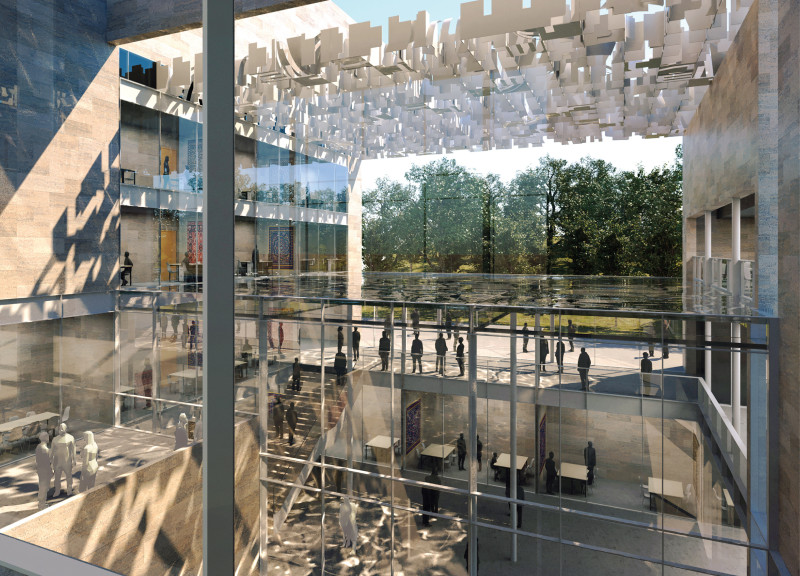5 key facts about this project
At its core, the project functions as a multi-purpose facility designed to serve the community. It accommodates a range of activities, from educational programs to recreational spaces, fostering connections among users. The architect's vision focuses on creating an inclusive environment that invites interaction and collaboration, making it an integral part of the local landscape.
The exterior design showcases a blend of natural and man-made materials, promoting a dialogue between the building and its surroundings. The façade is predominantly clad in locally sourced timber, which not only enhances the aesthetic appeal but also ensures thermal efficiency and durability. Complementing this are sections of glass that allow natural light to permeate the interiors, promoting a sense of openness while providing views of the surrounding environment. This choice of materials is significant, as it minimizes the ecological footprint of the project while celebrating local craftsmanship.
Internally, the layout is designed with flexibility in mind, featuring adaptable spaces that can be easily reconfigured to suit various activities. Open floor plans are prioritized, enabling fluid movement throughout the building. Key areas include multifunctional rooms, which are equipped with movable partitions, catering to both small gatherings and larger community events. The design also incorporates a central atrium that acts as a hub, connecting different wings of the building while serving as a naturally lit gathering place for visitors.
Furthermore, sustainable design practices are at the forefront of this project. The incorporation of green roofs and rainwater harvesting systems exemplifies a commitment to reducing environmental impact. Energy-efficient systems, including solar panels, contribute to the overall sustainability goals, allowing the building to function largely independent of external energy sources. These elements demonstrate an understanding of the importance of ecological considerations in contemporary architecture.
Unique design approaches are evident throughout the project, including the use of biophilic design principles. The integration of indoor plants and natural materials within the interior spaces creates a calming atmosphere, enhancing the health and well-being of users. This emphasis on nature reflects a growing trend in architecture, where the connection to the natural environment is no longer an afterthought but a fundamental aspect of design philosophy.
Accessibility is also a key consideration, with features that ensure ease of use for individuals of all abilities. Clear pathways, ramps, and adjustable furniture reflect an understanding of inclusivity, making the building welcoming to everyone. This commitment to accessibility is a vital part of the project's charm, emphasizing the notion that inclusive design is good design.
In summary, this architectural project exemplifies a user-centered approach characterized by thoughtful material selection, sustainability, and community focus. It stands as a testament to contemporary architectural principles, inviting users to explore its spaces while engaging with the environment around them. To gain deeper insights into this architectural design, including detailed architectural plans, sections, and other design elements, readers are encouraged to delve into the project presentation, discovering the nuances and elegance of this architectural endeavor.


 Yaron Yona Kuperstock
Yaron Yona Kuperstock 




















